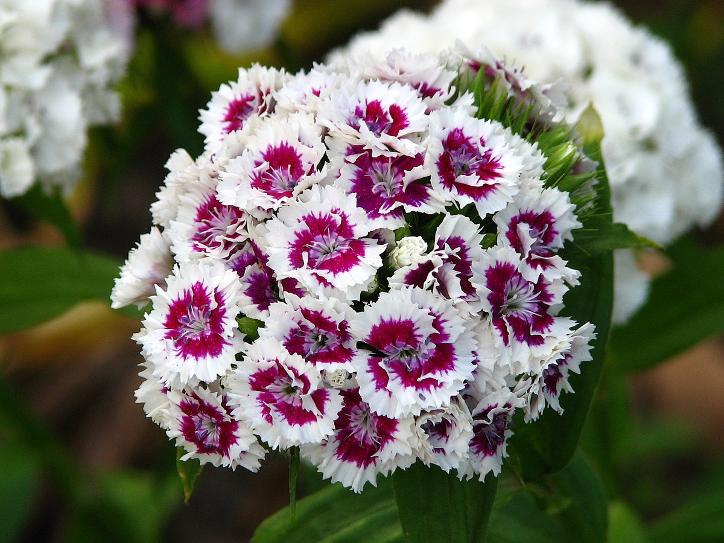Sweet William Plant
Sweet William (Dianthus barbatus) is a biennial that grows 1-2 ft tall, hardy in USDA Zones 3-9, prefers well-drained, rich soil, full sun to part shade, medium moisture, is edible, and has no medicinal uses.

Habit
Clump-forming
Height
0.3-0.5 m
Growth
Biennial
Soil
Well-drained, fertile
Shade
Full Sun
Moisture
Moderate
Edible
No
Medicinal
Yes
Origin
Europe
Climatic Condition
Temperate, Subtropical
Temperature (°)
15-25°C
Humidity (%)
50-70%
Potting media
Loamy, peat
Fertilizers
Balanced NPK (10-10-10)
Watering
Regular
Plant Weight
100-200 g
Flowering Time
Spring, Summer
Soil Ph level
6.0 - 7.0
Water Ph level
6.0 - 7.0
Soil EC
1-2 dS/m
Yield Per Plant
Ornamental, cut flower
NPK ratio
10:10:10
life Span
Biennial
Health Benefits
Ornamental, fragrant
Suggested Grow Media or Potting Mix ?
40% peat moss, 30% compost, 30% perlite
Suggested Fertigation/Fertilizers
Fertilize every 2 weeks with a balanced, water-soluble fertilizer.
Common Diseases and Remedies
Leaf Spot, Rust, Powdery Mildew, Botrytis Blight, Root Rot.
Brown or black spots on leaves, Orange or brown pustules on leaves, White powdery growth on leaves, Gray mold on flowers and leaves Wilting, yellowing leaves, root discoloration.
Prune and destroy infected leaves, remove infected debris, Neem oil, Improve air circulation, Improve soil drainage, use beneficial soil microbes.
Copper-based fungicides, Fungicides with myclobutanil, Sulfur-based fungicides, Iprodione or thiophanate-methyl, Fungicides with metalaxyl or mefenoxam.
HEALTH BENEFITS
· Contains compounds with antibacterial properties
· Used in herbal remedies for digestive support
· May help reduce inflammation